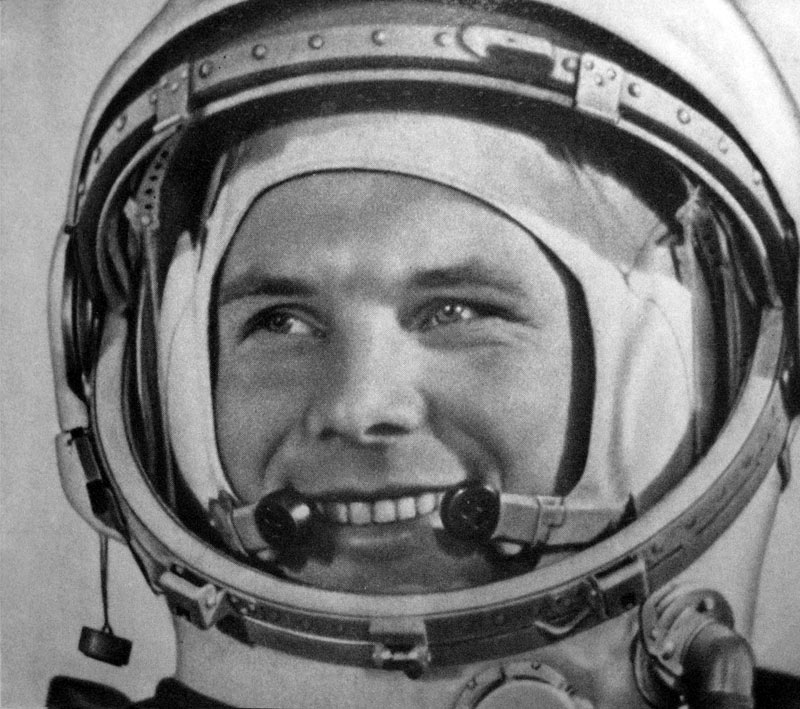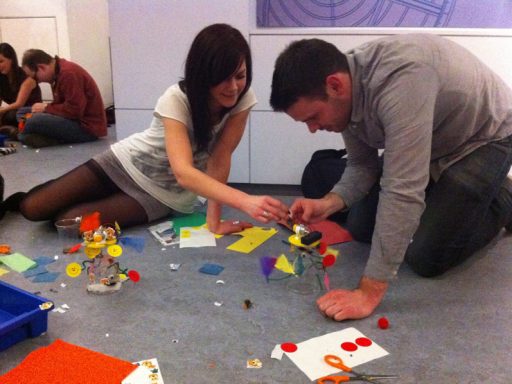The 3rd May marks the 60th anniversary of the Festival of Britain. The Festival celebrated the centenary of the Great Exhibition of 1851 at Crystal Palace as well as advances in British science, technology, manufacturing and art. You won’t be surprised to hear that some of our objects were displayed there. On first look, these fabric samples appear to be simple circular designs. To the trained eye however, the pattern is based on the structure of haemoglobin produced by x-ray […]

Meet Jon, the man tasked with making Lates great.
He’s been working away on the programme for this month’s Space-themed Lates (Wednesday 27 April 6.45 – 10pm) but he’s taken a break to tell us what he’s got in store…
How do you develop a new medical tool? Many of the objects in the Science Museum’s collections are the finished article. You rarely see the hours of perspiration or the moment of inspiration that led to the tool being made in the first place. This is why I really enjoy looking at and researching prototypes. Developed by Kenneth Dobbie in the 1960s, these saws were the first step towards creating a power-operated saw for use during hip replacement surgery. He was working as an Electrical Safety […]
The recent pronouncements by Scott Springer – Borough President of Manhattan – about the rat problem in New York received international attention. While they may have been motivated as much by politics as public health concerns, they once again highlighted our fractious relationship with these particular rodent. Few animals have attained such universal levels of loathing, although more than one friend of mine has enjoyed keeping pet rats – ‘Dave’ being one still remembered with great fondness. But even the […]
We left him in orbit but now it’s time to come back to Earth. Our own version of Yuri Gagarin is back to finish the story of his historic space flight.

Fifty years ago today Yuri Gagarin became the first man in space. Our version of the great man is here to blog about that life-changing lift-off…
We spend most of our daily lives surrounded by things. Many of which we barely notice. They’re always just there. Lampposts, telephones, pens, kettles, books… They may change in appearance, but certain stuff always seems to keep hanging around. Until, those times you realise that you can’t recall the last time you actually saw one of these ubiquitous items. Typewriters anyone? I’m fascinated by how objects make that transition from commonplace and everyday to banishment, and the ranks of the ‘disappeared’. Fashions change and technological advances […]

In the run-up to the 50th anniversary of the first man in space the Science Museum’s Yuri Gagarin (drama character) has kindly agreed to blog about how he was selected and trained for his mission to space.

Ah Lates – the one night a month we stay open till ten and welcome crowds of the young and fun for a strangely successful blend of science and socialising. And silent disco of course…
Wrapped up beneath these bandages is a mummified animal. How did it die? What material is it wrapped in? Are there amulets we can’t see inside? Is it an animal at all – could they be human remains? To answer question like these and more, the Science Museum is collaborating in a new nationwide project analysing the remains of ancient Egyptian animals. Led by researchers at the KNH Centre for Biomedical Egyptology, the Ancient Egyptian Animal Biobank project is aiming to scan, sample […]
Continuing with my Nobel Prize theme, I’ve been looking at the collections relating to Ronald Ross (1857-1932). Ross won the Nobel Prize for Physiology /Medicine in 1902 for his work on malaria. In 1897, five years after he started working on malaria, Ross established the life cycles of the mosquito. He proved the hypothesis of his predecessors Alphonse Laveran and Patrick Manson. Laveran would later win the 1907 Nobel Prize for his work. But he wasn’t the only one working on the […]
“We have also sound-houses, where we practise and demonstrate all sounds, and their generation. We have harmonies which you have not, of quarter-sounds, and lesser slides of sounds. Divers instruments of music likewise to you unknown, some sweeter than any you have, together with bells and rings that are dainty and sweet…” Daphne Oram, founder of the BBC Radiophonic Workshop, returned time and again to this quotation from Francis Bacon’s 17th century fantasy, The New Atlantis. Now, with help from […]